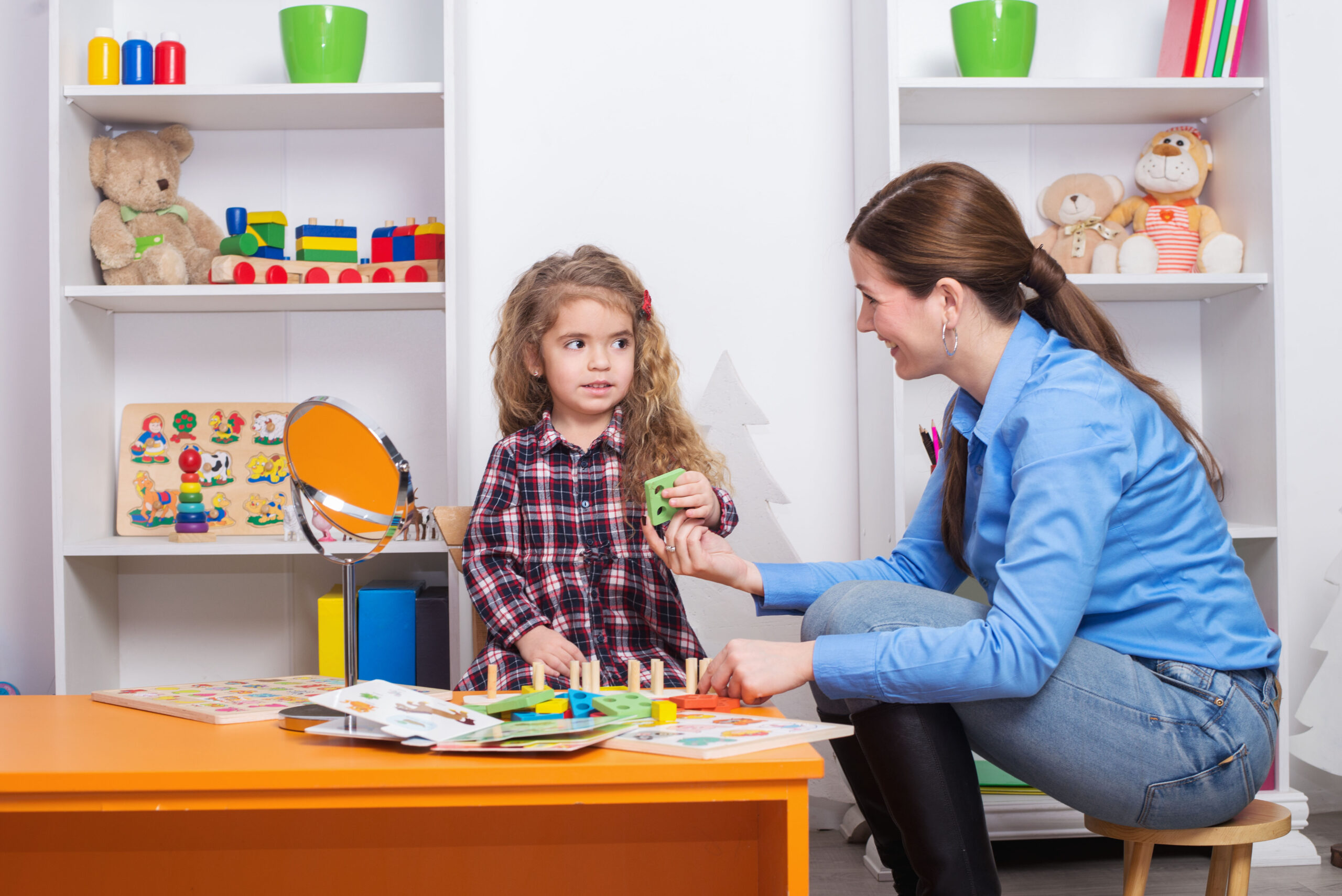Just think of a bright, inquisitive child who has trouble staying in one place, forgets to turn in assignments, or answers questions quickly. For many students with concentration-Deficit/Hyperactivity Disorder (ADHD), a disorder that impairs organization, self-control, and concentration, this is their everyday life. Even though these students have a lot of potential, standard classroom environments can be difficult, which frequently results in dissatisfaction, poorer academic achievement, and trouble forming friendships.
Success for children with ADHD requires more than just putting in more effort; it also requires receiving the appropriate support. Using techniques like movement breaks, clear routines, and flexible learning approaches to keep students interested, teachers play a critical role in modifying education.
The best interventions for each child can be identified through collaboration with healthcare providers. When educators, parents, and specialists work together, students with ADHD can thrive academically and socially. By understanding their individual challenges and strengths, we can turn barriers into opportunities and help every child reach their full potential in the classroom. Parents and schools must collaborate to create individualized support plans, ensuring that students receive the accommodations and structure they need to thrive.
School-Based Support for ADHD Students
Many kids with ADHD find it difficult to control their impulses, keep organized, and stay interested in their studies. They might have academic setbacks or discouragement if they don’t receive the proper help. Thankfully, schools can support these students’ success by putting evidence-based practices and legal protections into place.
ADHD Treatment Approaches in Schools
By implementing behavioral classroom management strategies including reward systems, regulated routines, and explicit expectations, teachers may establish a helpful learning environment. For instance, a teacher may find that a visual indication is more effective than verbal reprimands for a student who frequently disrupts class. Students who receive organizational training—such as using checklists, planners, or color-coded folders—are better able to manage their workload and deadlines, which lowers stress and boosts output.
Special Education Services and Legal Protections
Federal rules provide protection for students with ADHD and guarantee that they receive the necessary adjustments. Students whose ADHD has a major influence on their schoolwork can receive Individualized Education Programs (IEPs) under the Individuals with Disabilities Education Act (IDEA). The Rehabilitation Act’s Section 504 provides assistance in the form of 504 Plans, which offer modifications without changing the curriculum. A 504 Plan usually focuses on classroom modifications like extra time for testing or seating arrangements, but an IEP includes specialized education.
Common Accommodations Under IEPs and 504 Plans
In order for kids with ADHD to realize their full potential, accommodations assist level the playing field. If a student has trouble finishing assignments on time, they may be given more time or be permitted to take the test in a quiet environment.
Providing written directions or segmenting assignments into manageable chunks are examples of instructional adjustments that assist students in staying on course. Good behavior is encouraged by positive reinforcement techniques such as reward charts or commendation for maintaining concentration. A student’s capacity to focus can be significantly improved by making even small changes to the learning environment, such as moving their seat away from distractions.
Effective Classroom Strategies for ADHD
Teachers need to employ organized tactics that assist learning while maintaining student engagement because ADHD impacts attention, impulse control, and organization. These tactics, which range from teaching organizational skills to rewarding positive conduct, can significantly impact a child’s capacity to maintain focus and feel accomplished.
Behavioral Classroom Management
Reward systems and daily report cards are two of the best ways to help students with ADHD. For instance, a student who has trouble finishing assignments might receive stickers for each task they finish, which they can then exchange for a small reward. This structured reinforcement promotes positive habits without feeling overburdened. Teachers can also use daily progress reports, which let parents and students monitor behavioral and focus improvements, making ADHD management a collaborative effort between the home and the school.
Organizational Training for Students
Many students with ADHD have trouble remaining organized, remembering due dates, and keeping track of their homework. They can remain on top of their work by using simple tools like checklists, planners, and color-coded folders. An alert reminder on a digital device or a special folder for finished tasks, for instance, can be helpful for a student who frequently forgets their homework. By dividing up complex assignments into manageable chunks, teachers can also assist students in maintaining concentration and experiencing a sense of achievement.
Positive Behavior Support in Schools
For students with ADHD, traditional forms of discipline like punishment or detention frequently don’t function well. Non-punitive techniques, such refocusing attention, providing mobility breaks, and rewarding good conduct, can work far better. For instance, a teacher can assign a pupil a little fidget toy or a specific “think time” before speaking, instead of reprimanding them for speaking out in class. Students feel more in control of their behavior when clear expectations are set, such as through the use of visual schedules and dependable routines.
Classroom Accommodations for ADHD Students
ADHD students sometimes suffer in conventional classroom settings because the environment doesn’t always suit their demands. Teachers can support these children in maintaining their attention, organization, and engagement by implementing small but efficient modifications. A more welcoming and encouraging learning environment can be produced by changing the seating arrangements, altering the curriculum, and implementing behavior management techniques.
Modifying the Classroom Environment
Students with ADHD may find a strict, one-size-fits-all classroom arrangement burdensome. Exercise balls, standing desks, and silent areas are examples of flexible seating options that can assist students in controlling their energy and concentration. For example, a wobbling stool may be a better option for a kid who fidgets a lot than a regular chair. Students’ attention and involvement can be significantly increased by using preferred seating arrangements, such as positioning them close to the front of the room or away from distractions like windows or rowdy classmates.
Enhancing Organization and Instruction Delivery
Keeping track of coursework and following multi-step directions are challenges for many students with ADHD. They can maintain organization by using color-coded folders, digital planners, and regimented daily plans. A homework folder with distinct labels for “to-do” and “completed” assignments, for instance, can be helpful for a student who regularly forgets their assignments. Giving instructions that are clear, straightforward, and multimodal—for example, by mixing written, spoken, and visual cues—can also help teachers deliver instruction more effectively. To reinforce the activity, a teacher could hand out color-coded materials and display a step-by-step guide on the board rather of simply saying, “Complete your worksheet.”
Adjustments to Assignments and Testing
Large assignments can be broken down into smaller, more manageable steps to help ADHD children avoid feeling overwhelmed or giving up before they even begin. For instance, a teacher could help a student brainstorm one day, outline the next, and then write in phases rather than expecting them to finish a report all at once. Students are given the opportunity to exhibit their knowledge in ways that best suit their abilities when alternate methods of learning are permitted, such as oral reports, practical projects, or video presentations. Additionally, extending exam duration and giving students more time can help them better control their anxiousness and focus.
Behavior Management Techniques
Positive reinforcement works better for ADHD students than punishment. Nonverbal clues, such a hand signal or a sticky note, can be used by teachers to refocus students’ attention without making them feel uncomfortable. Students can be encouraged to increase their focus and self-control by utilizing individualized behavior plans that include rewards, such as points for maintaining focus or applying self-regulation strategies. A student who has trouble finishing assignments, for instance, might be given a “check-in” system where they receive a little incentive upon completing each step of the assignment.
Addressing Social and Emotional Challenges
A lot of kids with ADHD have trouble controlling their emotions, understanding social cues, and keeping friends, which makes them feel alone. These students can, nevertheless, acquire strong social skills and form deep bonds with the correct assistance and organized instruction.
Impact of ADHD on Social Skills
Due to their inability to control their emotions, kids with ADHD may respond impulsively, find it difficult to take turns in talks, or misread peer relationships. For instance, a student with ADHD may inadvertently annoy their peers by interrupting too often or finding it difficult to recognize when a joke has gone too far. Furthermore, some pupils may become socially isolated and low on self-esteem as a result of recurrently bad experiences.
Building Positive Social Experiences in the Classroom
Teachers can purposefully provide opportunities for students with ADHD to interact constructively with their peers. Students can practice social interactions in a safe and encouraging environment by participating in organized group activities, such as pair work with clear roles or small-group conversations with explicit guidelines. In order to help an ADHD student gain confidence while dealing with others, a teacher could, for example, pair them with a patient, understanding classmate for a science project.
By using coded hand gestures or a discreet tap on the desk as private signals for behavior reminders, teachers can assist children in self-correcting without feeling embarrassed. By rewarding good behavior without highlighting it, this method helps students maintain their involvement and relationships with their peers.
Tailoring Support Based on ADHD Subtypes
Teachers and parents can tailor support measures to each child’s requirements by having a thorough understanding of the three main ADHD subtypes. Schools can assist kids with ADHD in maximizing their abilities and overcoming everyday barriers by focusing on specific challenges.
Students with Predominantly Inattentive Symptoms
Instead of being disruptive, students with mostly inattentive ADHD may appear distracted, forgetful, or lost in thought. They may find it difficult to complete tasks on time, lose focus during lectures, or overlook crucial instructions. For instance, a student might begin a math assignment but become distracted midway through and end up staring out the window rather than finishing it.
Teachers can help these students by:
- They should be seated far from sources of distraction like open windows, crowded hallways, and chatty classmates.
- Give directions verbally, in writing on the board, and with detailed checklists, among other formats.
- By informally asking, “What’s your next step?” or by reviewing progress halfway through tasks, you can conduct frequent check-ins.
H3: Students with Predominantly Hyperactive-Impulsive Symptoms
Students who are hyperactive-impulsive may move a lot, answer questions quickly, find it difficult to wait their turn, or interrupt others. In regimented educational environments, these kids may become frustrated because they frequently act before thinking. For example, a child who is restless may tap their pencil constantly or yell out the response to a teacher’s question before being called upon.
Some useful tactics are:
- Permitting mobility while performing tasks, like walking while reading, standing at a desk, or sitting on an exercise ball.
- Including exercise breaks to control energy levels, such as a brief “walk and talk” conversation or a fast stretching session.
- Instructing students in impulse-control strategies, such halting before speaking or utilizing a covert fidget to let off steam.
Students with Combined Symptoms
Several tactics must be combined since some students exhibit both hyperactive-impulsive and inattentive characteristics. In addition to having trouble focusing, they may also have trouble managing their urges or staying seated. After beginning a task, these pupils may become restless, fidget, and lose sight of the directions.
For these pupils, educators can:
- Employ a combination of movement and structure, such as activity-based learning and guided checklists.
- Keep an eye on their specific needs; some might need additional attention techniques, while others would benefit more from modifications depending on mobility.
- Since these pupils may have days when they are able to concentrate well and days when they are restless, be adaptable and modify support according to daily behaviors.
Collaboration Among Educators, Parents, and Specialists
To establish a reliable support system that caters to each child’s particular requirements, educators, parents, and specialists must collaborate. Students are given the resources they need to succeed academically and socially when there is open and proactive communication and encouragement for self-advocacy.
Importance of Consistent Communication
Consider a student who is improving with a new planner system at home but fails to submit assignments. The teacher might believe the student is still having trouble staying organized if they are unaware of this new tactic. To keep everyone informed and to reinforce effective practices at home and at school, parents and teachers should communicate on a regular basis.
Among the strategies to keep in touch are:
- Progress reports can be sent via email, a shared document, or a straightforward checklist that is shared between the home and the school on a daily or weekly basis.
- Consultations with psychologists or school counselors to monitor behavioral trends and emotional health.
- Parent-teacher conferences that emphasize finding answers rather than only discussing problems.
Encouraging Student Self-Advocacy
Children must learn self-advocacy techniques and comprehend their own learning demands as they mature. A student who struggles with lengthy exams, for instance, can learn to ask for more time or a quiet place to work. These abilities not only benefit them in the classroom but also get them ready for challenges in the industry and in the classroom in the future.
Developing self-advocacy abilities:
- Students should be encouraged to determine which accommodations—such as mobility breaks, note-taking tools, or seating arrangements—help them the most.
- Instruct students on self-regulation tactics such as setting timers for assignments, dividing work into manageable chunks, or employing relaxing methods when they’re feeling stressed.
- Encourage self-directed organizing abilities, such using a digital planner to make reminders or color-coding assignments for various disciplines.
The Future of ADHD Support in Schools
Even though a lot of tactics have worked, more study and activism are needed to improve accommodations and make sure all students with ADHD have the resources they need to achieve. Schools can design learning environments that benefit all students—not just those who match the stereotype—by embracing innovation and diversity.
Research on Effective ADHD Accommodations
Although there is still much to learn, schools and educators use evidence-based practices to support students with ADHD. For instance, flexible sitting arrangements and activity breaks are beneficial to many kids, but their precise effects differ. To find out which accommodations are most effective for various ADHD subtypes, more research is required.
Additionally, technology is transforming the way that ADHD support is provided. Apps that support attention, organization, and time management—like AI-powered reminders and digital planners—are increasingly being used in the classroom. According to ongoing studies, students with ADHD may benefit even more from innovative technology solutions in the classroom.
Advocacy for Inclusive and Flexible Learning Environments
Teachers need to be knowledgeable about ADHD and its difficulties if they want to see long-lasting change. Many educators are still not well-versed in ADHD, therefore they are unsure of how to help these pupils. Increasing awareness and fostering professional growth guarantees that educators possess the abilities to provide inclusive and adaptable learning environments.
Equal access to resources for ADHD is another goal of advocacy campaigns. Encouraging system-wide changes, such as more funding for school modifications or specialized teacher training, helps ensure that students with ADHD get the assistance they need.
Conclusion
Every child with ADHD needs to learn in a setting that accommodates their difficulties while valuing their talents. We can support inclusive education, enhance classroom modifications, and further research to help students with ADHD succeed academically and socially.
At K Altman Law, we’re committed to defending ADHD students’ educational rights. We are available to assist you if you require advice with IEPs, 504 Plans, or advocating for school accommodations. Because all children should have the proper assistance to thrive.





